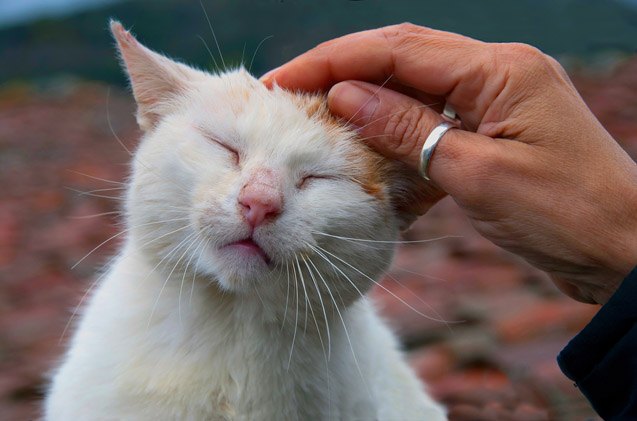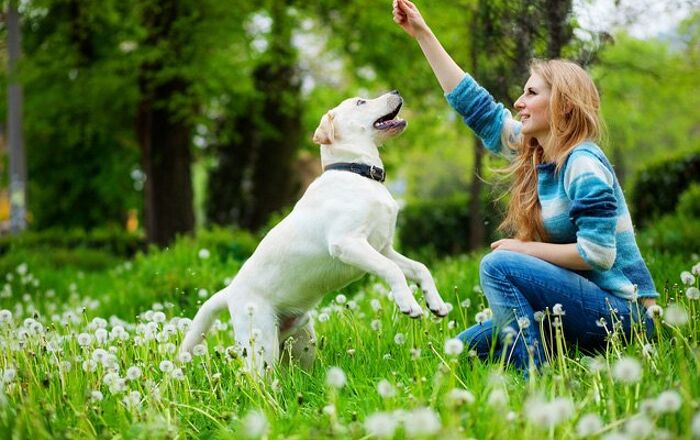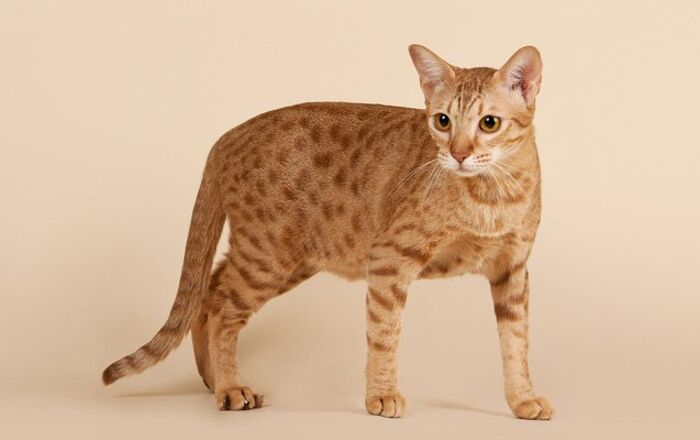
There’s a right way – and lots of wrong ways – to pet a cat. Keep your hand intact and your kitty purring by knowing what sweet spots to scratch.
Cats are known for being standoffish at times – they can even be downright ornery – but there are also times when a cat seems to be craving attention. When you try to give them what they want, however, they bat your hand away or chomp down before you can yank it away. Why do cats react in such a strange way to being pet, and is there a right way to do it?
Related:Are You Petting Your Cat Wrong?
What Are the Best Places to Pet a Cat?
Every cat has his own unique preferences for handling. Some cats love being rubbed on top of the head while others prefer being scratched at the base of the tail. Though you’ll need to learn your own cat’s preferences, there are a few places that tend to be safe for petting:
Cats tend to enjoy being petted in the areas where their scent glands are concentrated. If you’ve ever seen your cat rubbing on the corner of the couch or another piece of furniture, he usually does it with his head and face. When your cat rubs his face on something he’s not just doing it because it feels good – he’s also leaving some of his scent behind. So, if you want to pet your cat where he likes to be petted, concentrate on these areas.
Related:What Does It Mean When A Cat Wags Its Tail?
The first place to pet a cat is under the chin – some cats like gentle stroking while others prefer scratching. Concentrate your attention on the area where the jawbone connects to your cat’s skull – petting in this area is almost guaranteed to elicit a purr. Many cats also like having their cheeks scratched just behind the whiskers or on the back of their heads behind the ears. Finally, if you pet your cat on the back, you may notice him raising his back end, begging you to scratch the base of his tail.
Are There Any Areas to Avoid?
Just as there are a few places your cat definitely wants to be scratched or petted, there are also some places you need to leave alone. Again, every cat is different, but most cats really don’t like having their bellies rubbed or scratched. Dogs like being pet in this area because they don’t feel as threatened exposing their bellies. Cats, on the other hand, are very aware that they could be either predator or prey, so they tend to protect the more vulnerable parts of their bodies. Even if your cat rolls over and seems like he’s asking for a belly rub, you shouldn’t be surprised if he immediately latches on to your hand when you try.
Because every cat is unique, you may need to do some experimenting with your own cat to determine where and how he likes to be pet. Try different areas, paying close attention to your cat’s reaction – if he purrs, it is a sure sign that he likes it. If he growls or swats at your hand, stay away!













